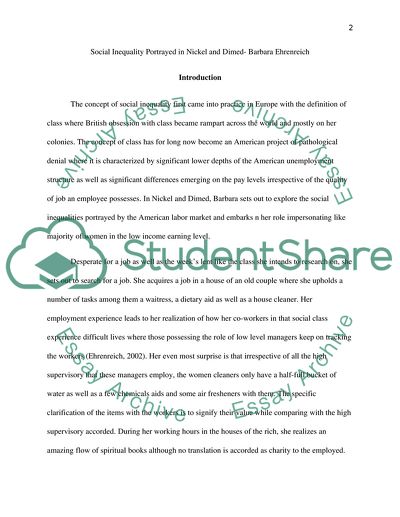Cite this document
(Social Inequality Portrayed in Nickel and Dimed- Barbara Ehrenreich Book Report/Review, n.d.)
Social Inequality Portrayed in Nickel and Dimed- Barbara Ehrenreich Book Report/Review. Retrieved from https://studentshare.org/sociology/1865733-nickel-and-dimed-by-barbara-ehrenreich-related-to-social-inequality
Social Inequality Portrayed in Nickel and Dimed- Barbara Ehrenreich Book Report/Review. Retrieved from https://studentshare.org/sociology/1865733-nickel-and-dimed-by-barbara-ehrenreich-related-to-social-inequality
(Social Inequality Portrayed in Nickel and Dimed- Barbara Ehrenreich Book Report/Review)
Social Inequality Portrayed in Nickel and Dimed- Barbara Ehrenreich Book Report/Review. https://studentshare.org/sociology/1865733-nickel-and-dimed-by-barbara-ehrenreich-related-to-social-inequality.
Social Inequality Portrayed in Nickel and Dimed- Barbara Ehrenreich Book Report/Review. https://studentshare.org/sociology/1865733-nickel-and-dimed-by-barbara-ehrenreich-related-to-social-inequality.
“Social Inequality Portrayed in Nickel and Dimed- Barbara Ehrenreich Book Report/Review”, n.d. https://studentshare.org/sociology/1865733-nickel-and-dimed-by-barbara-ehrenreich-related-to-social-inequality.


